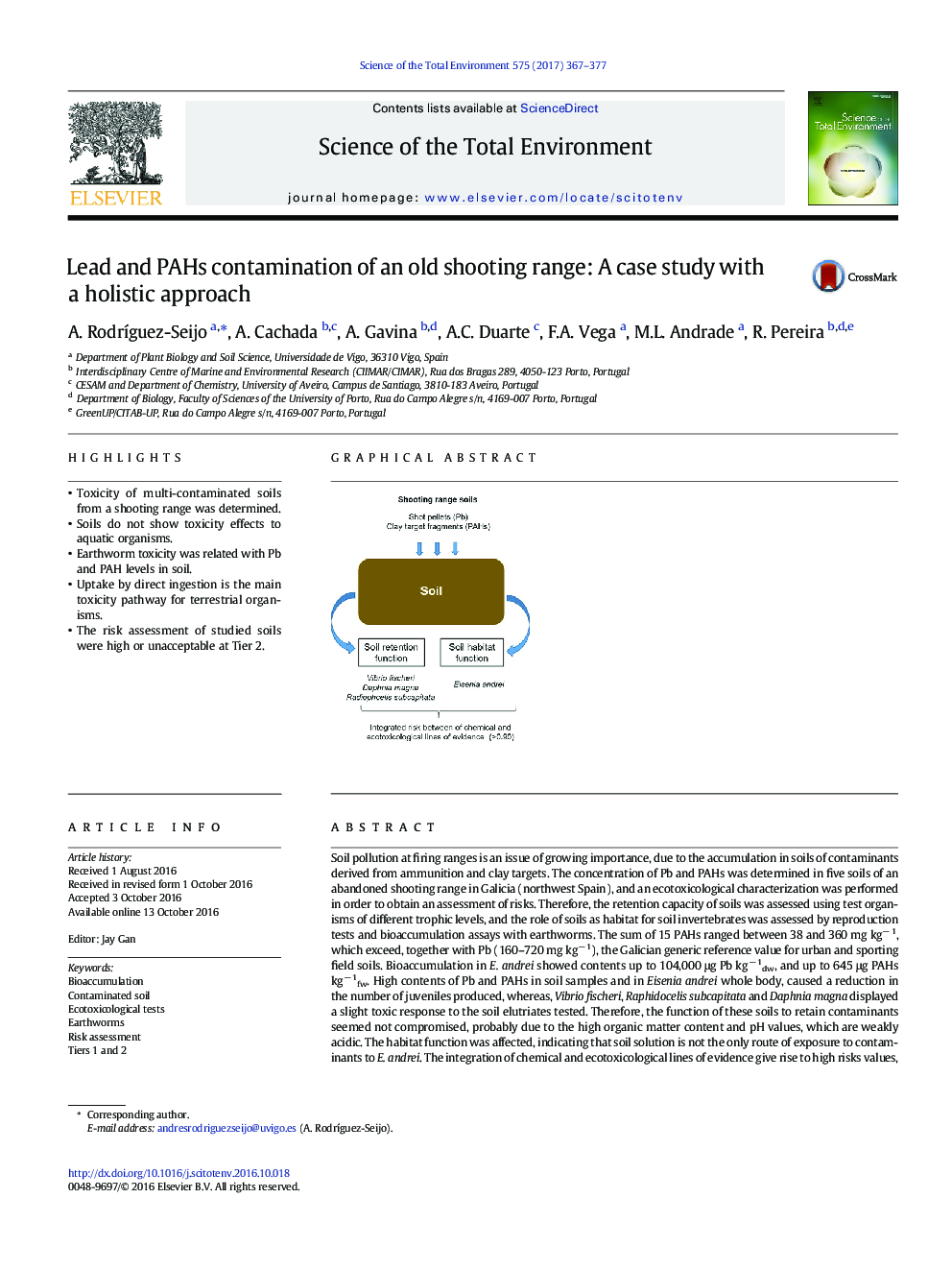| کد مقاله | کد نشریه | سال انتشار | مقاله انگلیسی | نسخه تمام متن |
|---|---|---|---|---|
| 6319476 | 1619716 | 2017 | 11 صفحه PDF | دانلود رایگان |
- Toxicity of multi-contaminated soils from a shooting range was determined.
- Soils do not show toxicity effects to aquatic organisms.
- Earthworm toxicity was related with Pb and PAH levels in soil.
- Uptake by direct ingestion is the main toxicity pathway for terrestrial organisms.
- The risk assessment of studied soils were high or unacceptable at Tier 2.
Soil pollution at firing ranges is an issue of growing importance, due to the accumulation in soils of contaminants derived from ammunition and clay targets. The concentration of Pb and PAHs was determined in five soils of an abandoned shooting range in Galicia (northwest Spain), and an ecotoxicological characterization was performed in order to obtain an assessment of risks. Therefore, the retention capacity of soils was assessed using test organisms of different trophic levels, and the role of soils as habitat for soil invertebrates was assessed by reproduction tests and bioaccumulation assays with earthworms. The sum of 15 PAHs ranged between 38 and 360 mg kgâ 1, which exceed, together with Pb (160-720 mg kgâ 1), the Galician generic reference value for urban and sporting field soils. Bioaccumulation in E. andrei showed contents up to 104,000 μg Pb kgâ 1dw, and up to 645 μg PAHs kgâ 1fw. High contents of Pb and PAHs in soil samples and in Eisenia andrei whole body, caused a reduction in the number of juveniles produced, whereas, Vibrio fischeri, Raphidocelis subcapitata and Daphnia magna displayed a slight toxic response to the soil elutriates tested. Therefore, the function of these soils to retain contaminants seemed not compromised, probably due to the high organic matter content and pH values, which are weakly acidic. The habitat function was affected, indicating that soil solution is not the only route of exposure to contaminants to E. andrei. The integration of chemical and ecotoxicological lines of evidence give rise to high risks values, restricting the use of these areas, and pointing for risks to surrounding ecosystems due to possible trophic transferences. The calculation of risks using the chemical and ecotoxicological data, required by Spanish legislation, could be a good approach to communicate with those responsible and/or involved in the management of contaminated sites.
63
Journal: Science of The Total Environment - Volume 575, 1 January 2017, Pages 367-377
